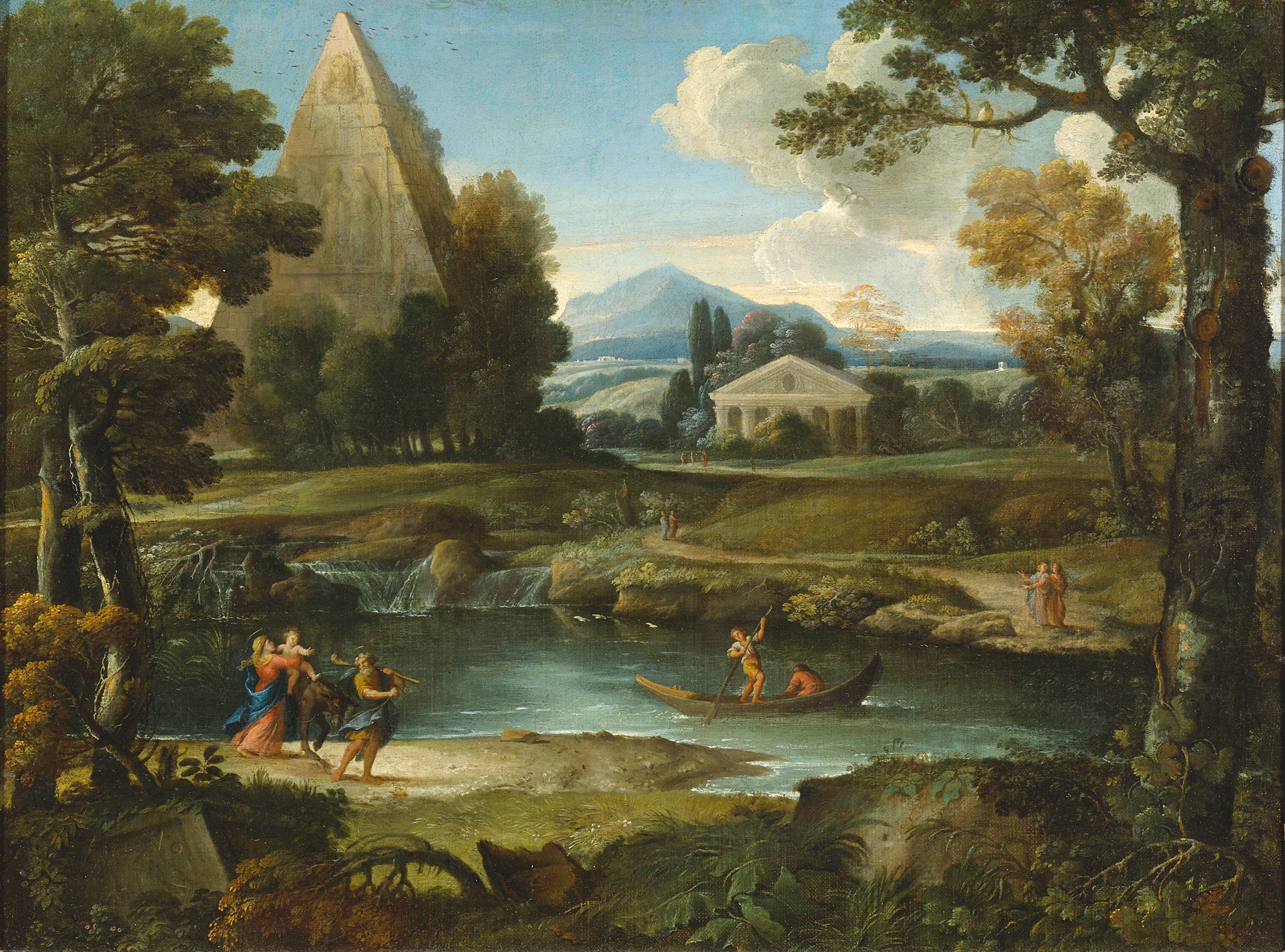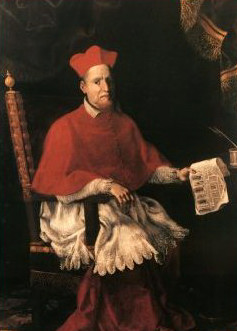|
Tivoli Cathedral
Tivoli Cathedral ( it, Duomo di Tivoli or ''Basilica Cattedrale di San Lorenzo Martire'') is a Roman Catholic cathedral, dedicated to Saint Lawrence, in Tivoli, Lazio, Italy. It is the seat of the bishop of Tivoli. History According to a legend, it was built by Emperor Constantine after the Edict of Milan (313). The local tradition attributes the building of the church to Pope Simplicius (468-483), who was born at Tivoli. The ''Liber pontificalis'', in the biography of Pope Leo III (795-816), contains the first reference to the "basilica beati martyris Laurentii sita infra civitatem Tyburtinam" ("basilica of the Blessed Martyr Lawrence in the town of Tivoli"). Whatever the exact date, the first church was built over the basilica in the forum of the Roman city of Tibur (1st century BC), whose apse can still be seen behind the one of the present building. This church was rebuilt in Romanesque style between the 11th and 12th centuries, and the bell tower belongs to this rebuildi ... [...More Info...] [...Related Items...] OR: [Wikipedia] [Google] [Baidu] |
Tibur
Tivoli ( , ; la, Tibur) is a town and in Lazio, central Italy, north-east of Rome, at the falls of the Aniene river where it issues from the Sabine hills. The city offers a wide view over the Roman Campagna. History Gaius Julius Solinus cites Cato the Elder's lost ''Origines'' for the story that the city of Tibur was founded by Catillus the Arcadian, a son of Amphiaraus, who came there having escaped the slaughter at Thebes, Greece. Catillus and his three sons Tiburtus, Coras, and Catillus drove out the Siculi from the Aniene plateau and founded a city they named Tibur in honor of Tiburtus. According to another account, Tibur was a colony of Alba Longa. Historical traces of settlement in the area date back to the thirteenth century BC. ''Tibur'' may share a common root with the river Tiber and the Latin praenomen ''Tiberius''. From Etruscan times Tibur, a Sabine city, was the seat of the Tiburtine Sibyl. There are two small temples above the falls, the rotunda traditio ... [...More Info...] [...Related Items...] OR: [Wikipedia] [Google] [Baidu] |
Pierre Puget
Pierre Paul Puget (16 October 1620 – 2 December 1694) was a French Baroque painter, sculptor, architect and engineer. His sculpture expressed emotion, pathos and drama, setting it apart from the more classical and academic sculpture of the Style Louis XIV. Biography Pierre Paul Puget was born on 16 October 1620 at the home of his father, a stone mason, in the working-class neighborhood of Panier, in Marseille. As his two older brothers were trained as stone masons, he was trained as a woodcarver. He began his career at the age of fourteen, carving the elaborate wooden ornament of the galleys built in the Marseille shipyards. He also showed talent as a painter. Italy In 1640, at the age of eighteen, taking his tools with him, he departed Marseille by sea to Livorno, Italy and then to Florence in search of an atelier which would employ him as a carver or painter. He carved some decorative panels in Florence, and then, with a good recommendation from his employer, and ... [...More Info...] [...Related Items...] OR: [Wikipedia] [Google] [Baidu] |
Christophe Veyrier
Christophe Veyrier (25 June 1637 – 10 June 1689) was a French sculptor, the nephew and follower of Pierre Puget. Veyrier was born in Trets, Bouches-du-Rhône, France. He arrived in Genoa in 1663 and stayed for a number of years, before moving to Rome to live from 1668-70. In 1674 he married the daughter of the sister of Puget's wife. He worked in Aix-en-Provence, then settled in Toulon, where he lived until his death in 1689. In one of his most important commissions, he created religious statues for the Chapel of Corpus Domini in Toulon Cathedral. He also worked at Montpellier. Statues of ancient and mythological subjects are attributed to him, including the white marble relief of the family of Darius displayed at Stowe House in England. The most recent studies attribute to him the statue of the ''Immaculate Conception'' in Tivoli Cathedral (according to older literature the statue was formerly attributed to Puget himself). His sculptures are held by the Musée d'Art, ... [...More Info...] [...Related Items...] OR: [Wikipedia] [Google] [Baidu] |
Giovanni Francesco Grimaldi
Giovanni Francesco Grimaldi (1606 – 28 November 1680) was an Italian painter, draughtsman, printmaker and architect. He was an accomplished fresco painter of classical landscapes which were popular with leading Roman families. Life Grimaldi was born in Bologna, and trained in the circle of the Carracci family. He was afterwards a pupil of Cardinal Francesco Albani. He went to Rome, and was appointed architect to Pope Paul V and also patronized by succeeding popes. Towards 1648 he was invited to France by Cardinal Mazarin, and for about two years was employed in buildings for that minister and for Louis XIV, and in fresco-painting in the Louvre. His colour was strong, somewhat excessive in the use of green; his touch light. He painted history, portraits and landscapes—the, last with predilection, especially in his advanced years—and executed engravings and etchings from his own landscapes and from those of Titian and the Caracci. Returning to Rome, he was made ''princip ... [...More Info...] [...Related Items...] OR: [Wikipedia] [Google] [Baidu] |
Guido Reni
Guido Reni (; 4 November 1575 – 18 August 1642) was an Italian painter of the Baroque period, although his works showed a classical manner, similar to Simon Vouet, Nicolas Poussin, and Philippe de Champaigne. He painted primarily religious works, but also mythological and allegorical subjects. Active in Rome, Naples, and his native Bologna, he became the dominant figure in the Bolognese School that emerged under the influence of the Carracci. Biography Born in Bologna into a family of musicians, Guido Reni was the only child of Daniele Reni and Ginevra Pozzi.Spear, Richard E. "Reni, Guido". ''Grove Art Online. Oxford Art Online''. Oxford University Press. Apprenticed at the age of nine to the Bolognese studio of Denis Calvaert, he was soon joined in that studio by Albani and Domenichino. When Reni was about twenty years old, the three Calvaert pupils migrated to the rising rival studio, named ''Accademia degli Incamminati'' (Academy of the "newly embarked", or progress ... [...More Info...] [...Related Items...] OR: [Wikipedia] [Google] [Baidu] |
Raffaele Giuliani
Raffaele () is an Italian given name and surname, variant of the English Raphael. Notable people with the name include: Given name *Raffaele Amato, Italian mobster *Raffaele Cutolo, Italian mobster *Raffaele Ganci, Italian mobster *Raffaele Cantone, Italian magistrate *Raffaele De Rosa, Italian motorcycle racer * Raffaele Di Paco, Italian cyclist *Raffaele Fitto, Italian politician *Raffaele Guariglia, Italian politician *Raffaele Lombardo, Italian politician *Raffaele Palladino, Italian footballer *Raffaele Pinto, Italian racing driver *Raffaele Pisu, Italiano actor *Raffaele Riario, Italian cardinal *Raffaele Rossetti, Italian politician *Raffaele Carlo Rossi, Italian cardinal *Raffaele Viviani, Italian artist *Raffaele Contigiani (1920–2008), Italian architect Surname * Virginia Raffaele, Italian actress See also * Raphael (other) * Rafael (other) * San Raffaele (other) * Raffaello (other) Raffaello, Raffaele or Raffaellino is an Italian ... [...More Info...] [...Related Items...] OR: [Wikipedia] [Google] [Baidu] |
Pietro Labruzzi
Pietro Labruzzi (1739–1805) was an Italian painter of the Neoclassical period, active in Rome and Poland. He is best known for his altarpieces and portraits. He was born and died in Rome. Pietro was recruited as a painter for the court of Stanislaus Augustus, King of Poland. Among his works is an altarpiece of the Chapel of the Madonna for the church of Gesù e Maria Gesù or Gesu may refer to: * Church of the Gesù, the mother church of the Society of Jesus ** Church of the Gesù (other), other churches with the name * Jesus in the Italian language * Gesù Nuovo, a church and a square in Naples, Ita ... in Rome. His younger brother Carlo Labruzzi was a respected landscape painter in Rome. His son, Tommasso Pietro Labruzzi, was a history painter in Rome, died in 1808. One of his pupils was . [...More Info...] [...Related Items...] OR: [Wikipedia] [Google] [Baidu] |
Getulius
Saint Getulius (died 120 AD) is venerated together with Amantius (Amancius), Cerealus (Caerealis), and Primitivus ( it, Getulio, Amanzio, Cereale, e Primitivo) as a Christianity, Christian martyr and saint. They are considered to have died at Gabii. According to tradition, Getulius was the husband of Saint Symphorosa. Getulius is a name meaning "of the Gaetulia, Gaetuli", which was a tribe of North Africa. Legends and burial According to his legend, Getulius was a native of Gabii in Sabina (region), Sabina. Getulius was an officer in the Roman army who resigned when he became a Christian. He retired to his estates near Tivoli, Italy, Tivoli. Caerealis was an imperial legatus, legate sent to arrest him but was converted to Christianity by Getulius. Primitivus was another officer sent to arrest him, but he was also converted. Amantius was Getulius' brother. According to his Passio, all four men were tied to a stake and set alight. However, the fire did not harm them, so they ... [...More Info...] [...Related Items...] OR: [Wikipedia] [Google] [Baidu] |
Symphorosa
Symphorosa ( it, Sinforosa; died circa AD 138) is venerated as a saint of the Catholic Church. According to tradition, she was martyred with her seven sons at Tibur (present Tivoli, Lazio, Tivoli, Lazio, Italy) toward the end of the reign of the Roman Hadrian, Emperor Hadrian (117–38).Ott, Michael. "St. Symphorosa." The Catholic Encyclopedia Vol. 14. New York: Robert Appleton Company, 1912. 25 October 2021 Narrative The story of their martyrdom is told in an ancient ''Passio'', the credibility of which is seriously questioned by many modern hagiologists. According to the ''Passio'', Symphorosa was a Tiburtine matron and the widow of Getulius, a native of Gabii in Sabina. He was a tribune in the Roman army, but resigned upon being baptized a Christian, ultimately retiring to his ...[...More Info...] [...Related Items...] OR: [Wikipedia] [Google] [Baidu] |
Angelo De Angelis
Angelo is an Italian masculine given name and surname meaning "angel", or "messenger". People People with the given name *Angelo Accattino (born 1966), Italian prelate of the Catholic Church *Angelo Acciaioli (bishop) (1298–1357), Italian Roman Catholic bishop from Florence *Angelo Achini or Angiolo Achini (1850–1930), Italian painter *Angelo Agostini (1843–1910), illustrator, journalist and founder of several publications, and although born in Italy, is considered the first Brazilian cartoonist *Angelo Aimo (born 1964), Italian footballer *Angelo Albanesi (late 1765–1784), Italian engraver *Angelo Alistar (born 1975), Romanian footballer * Angelo Ambrogini Poliziano (1454–1494), Florentine classical scholar and poet *Angelo Andres (1851–1934), Italian zoologist *Angelo Anelli (1761–1820), Italian *Angelo Angeli (1864–1931), Italian chemist *Angelo Anquilletti (1943–2015), Italian football defender *Angelo Antonino Pipitone (born 1943), member of the Sicilian Ma ... [...More Info...] [...Related Items...] OR: [Wikipedia] [Google] [Baidu] |
Giulio Roma
Giulio Roma (16 September 1584 – 16 September 1652) was an Italian Catholic Cardinal and Bishop of Recanati and Loreto. Roma was born 16 September 1584 in Milan, one of 16 children born to noble parents. He was educated at the University of Pavia and the University of Perugia. At a young age he became a chamberlain to Cardinal Federico Borromeo, Archbishop of Milan. Thereafter he went to Rome and had an audience with Pope Paul V, who asked him to move to Rome and named him a consistorial lawyer in 1607. He was named ''Governor of Orvieto'' in 1618 then ''Governor of Camerino'' in 1619 and ''Governor of Perugia'' in 1619 where he stayed until 1621 until he was elevated to cardinal on 11 January. He was installed as Cardinal-Priest at the Basilica of Saint Mary Above Minerva. In 1621 he was ordained Bishop of Recanati and Loreto; a position he held until his death. He participated in the papal conclaves of 1621 and Papal conclave, 1623. In 1634 he was appointed Bishop of ... [...More Info...] [...Related Items...] OR: [Wikipedia] [Google] [Baidu] |




